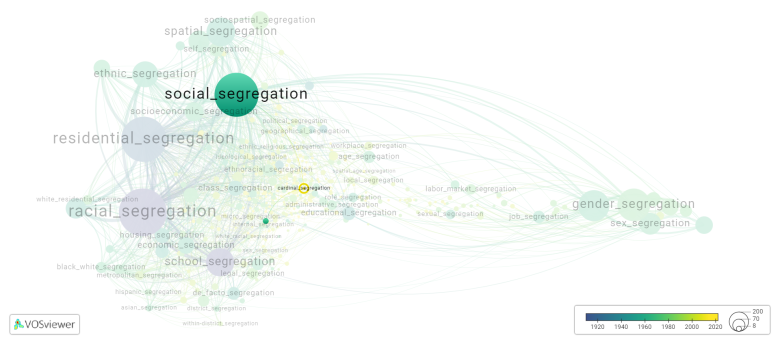Cardinal segregation
Date and country of first publication[1][edit | edit source]
2021
Spain
Definition[edit | edit source]
Cardinal segregation refers to the practice of separating individuals based on their perceived social or economic status, rather than their race or ethnicity. This form of segregation can occur in a variety of settings, such as schools, neighborhoods, or workplaces, where individuals are divided according to their income, education level, or other indicators of social standing. Cardinal segregation can lead to increased inequality and limited opportunities for those who are disadvantaged in terms of social status.
See also[edit | edit source]
Related segregation forms[edit | edit source]
Cardinal segregation is frequently discussed in the literature with the following segregation forms:
This visualization is based on the study The Multidisciplinary Landscape of Segregation Research.
For the complete network of interrelated segregation forms, please refer to:
References[edit | edit source]
Notes[edit | edit source]
- ↑ Date and country of first publication as informed by the Scopus database (December 2023).
At its current state, this definition has been generated by a Large Language Model (LLM) so far without review by an independent researcher or a member of the curating team of segregation experts that keep the Segregation Wiki online. While we strive for accuracy, we cannot guarantee its reliability, completeness and timeliness. Please use this content with caution and verify information as needed. Also, feel free to improve on the definition as you see fit, including the use of references and other informational resources. We value your input in enhancing the quality and accuracy of the definitions of segregation forms collectively offered in the Segregation Wiki ©.
Cardinal segregation appears in the following literature[edit | edit source]
Calsamiglia C., Martínez-Mora F., Miralles A. (2021). School Choice Design, Risk Aversion and Cardinal Segregation. Economic Journal, 131(635), 1081-1104. Oxford University Press.https://doi.org/10.1093/ej/ueaa095

